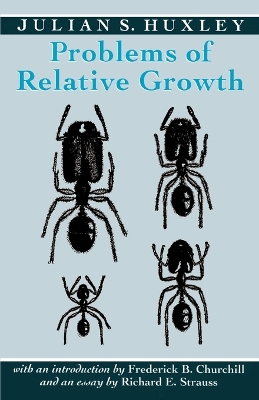Foundations of Natural History
1 total work
This detailed study of the different rates of growth of parts of the body relative to the body as a whole represents Sir Julian Huxley's great contribution to analytical morphology, and it is still a basis for modern investigations in morphometrics and evolutionary biology. Huxley was the first to put the concept of relative growth - or allometry - upon a firm mathematical foundation, and since publication of this book in 1932, his work has been found to have greater implications than even he imagined. Problems of Relative Growth is at once a formulation of the basic principles of allometry and a survey of its many and various occurrences and applications. Examples are taken from such widely divergent areas as the development of the large claw in male fiddler-crabs, the size and number of points of deer antlers, heterogony in neuter social insects, the disproportionate growth of the human head from infancy to adulthood, and the formation of spiral shapes in certain mollusk shells and of the curved shape of the rhinoceros' horn. Starting from the fact of obvious disharmonic growth, Huxley formulates his first and fundamental law - that of the Constant Differential Growth Ratio.
He then demonstrates that the distribution of growth potential occurs in an orderly and systematic way - that there are growth-gradients culminating in growth-centers. Other topics treated include multiplicative and accretionary kinds of growth, the role of hormones and mutations, and the relevance of the entire investigation to the problems of orthogenesis, recapitulation, vestigial organs, the existence of nonadaptive characters, physiological genetics, comparative physiology, and systematics. In theirintroduction to this unabridged facsimile republication of the original 1932 edition, Frederick B. Churchill and Richard E. Strauss place Huxley's work in the context of modern research in history and biology.
He then demonstrates that the distribution of growth potential occurs in an orderly and systematic way - that there are growth-gradients culminating in growth-centers. Other topics treated include multiplicative and accretionary kinds of growth, the role of hormones and mutations, and the relevance of the entire investigation to the problems of orthogenesis, recapitulation, vestigial organs, the existence of nonadaptive characters, physiological genetics, comparative physiology, and systematics. In theirintroduction to this unabridged facsimile republication of the original 1932 edition, Frederick B. Churchill and Richard E. Strauss place Huxley's work in the context of modern research in history and biology.
